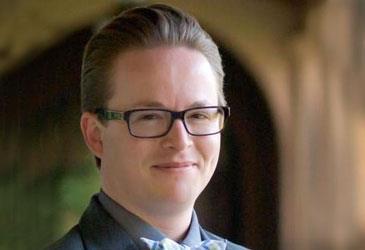As a medical student, do you ever wonder what it’s like to specialize in palliative care? Here’s your chance to find out.
Meet Kyle P. Edmonds, MD, a palliative care specialist and featured physician in AMA Wire’s “Shadow Me” Specialty Series,which offers advice directly from physicians about life in their specialties.
Read Dr. Edmond’s insights to help determine whether a career in palliative care is a good fit for you.
"Shadowing"Dr. Edmonds
Specialty: Palliative care
Years in practice: 3
A typical week:
[I work at ] the Howell Palliative Care Service at University of California at San Diego, [which] provides inter-professional consultation five days a week during business hours. There is no weekend or call responsibility at this time.
Our team consists of fellowship-trained physicians, nurse practitioners, clinical social workers and pharmacists, as well as learners of all stages in each of those disciplines. I typically arrive at work at 8 a.m. and prepare for our daily interdisciplinary sit-down rounds. We will see follow-up patients in the morning and new consults later in the day for an average of two new consults and six follow-up visits each day. We see most patients as a full team so that each discipline on the team can bring their own skill set to the bedside for each patient. We end our clinical day around 5 p.m.
As a full-time clinical physician, I have a four week on and two weeks off service schedule. We have two inpatient teams that I rotate across—one in a more inner-city trauma center, where I see lots of medical-surgical, ICU, trauma and liver transplant patients. The other service serves our tertiary oncology center inpatients as well as our advanced interventional cardiovascular patients.
In my two weeks off service, I am expected to be academically and administratively productive. I also spend time directing or co-directing courses at the schools of medicine and pharmacy as well as serving on multiple committees within the organization.
The most challenging aspect of caring for patients in palliative care:
The most challenging part of my job is competing with the myths surrounding palliative care. When we are doing our job as it’s meant to be done, we [see] any patient with serious illness to help with symptom management, the stress of illness, advance care planning and shared decision making to help her tolerate the curative or potentially curative therapy she is undergoing.
The most rewarding aspect of caring for patients in palliative care:
I get to learn enough about patients to see them in the context of their lives, beyond the acute medical issues.
Three adjectives to describe the typical palliative care specialist:
Compassionate. Thorough. Heretical.
How my lifestyle matches or differs from what I envisioned in medical school:
To be honest, in medical school I envisioned working much longer hours than I do. My job differs from my expectations in that I don’t have call or weekend responsibilities.
The main skills every physician should have for palliative care but won’t be tested for on the board exam:
Experts in palliative care see [very] challenging patients—whether that challenge is difficult symptoms, maladaptive coping, serious mental illness or complex family dynamics. This requires professionals who are not only compassionate and thorough but also comfortable with ambiguity and careful advocates for their patients. It also requires people with good boundaries and a healthy sense of their own counter-transference. Fellowship in palliative medicine is, in a way, a reprogramming for physicians away from the traditional medical approach to these challenging situations.
One question every physician in training should ask themselves before pursuing palliative care:
Palliative care is a team sport in which the physician is often not the authority in any given situation. Are you comfortable working with highly trained experts in other disciplines and deferring to their expertise when the patient’s needs are out of your scope?
The three key books I think every medical student should read regardless of planned field of practice are:
- Being Mortal by Atul Gawande
- How Doctors Think by Jerome Groopman
- Cutting for Stone by Abraham Verghese
If you want to learn more about palliative care, I also recommend students follow:
- pallimed.org
- geripal.org
- And on Twitter: #HPM and the #HPM Tweetchat, every Wednesday at 9 p.m. Eastern time
One thing students considering palliative care should remember:
There are certain people who can find the joy in this work and others for whom the joy remains obscured. Start reaching out and talking to many different types of people who work in the field to get a good understanding of what we do and whether you are one of those who sees the joy. A good way to do this is to get yourself to Twitter and follow the #hpm hashtag, where we have a diverse group of interesting people from whom to learn.
My mantra with each new patient is:
“No agenda.” This helps me leave my agenda or the primary team’s agenda outside of the room and focus my assessment in a patient-centered and family-oriented way.




